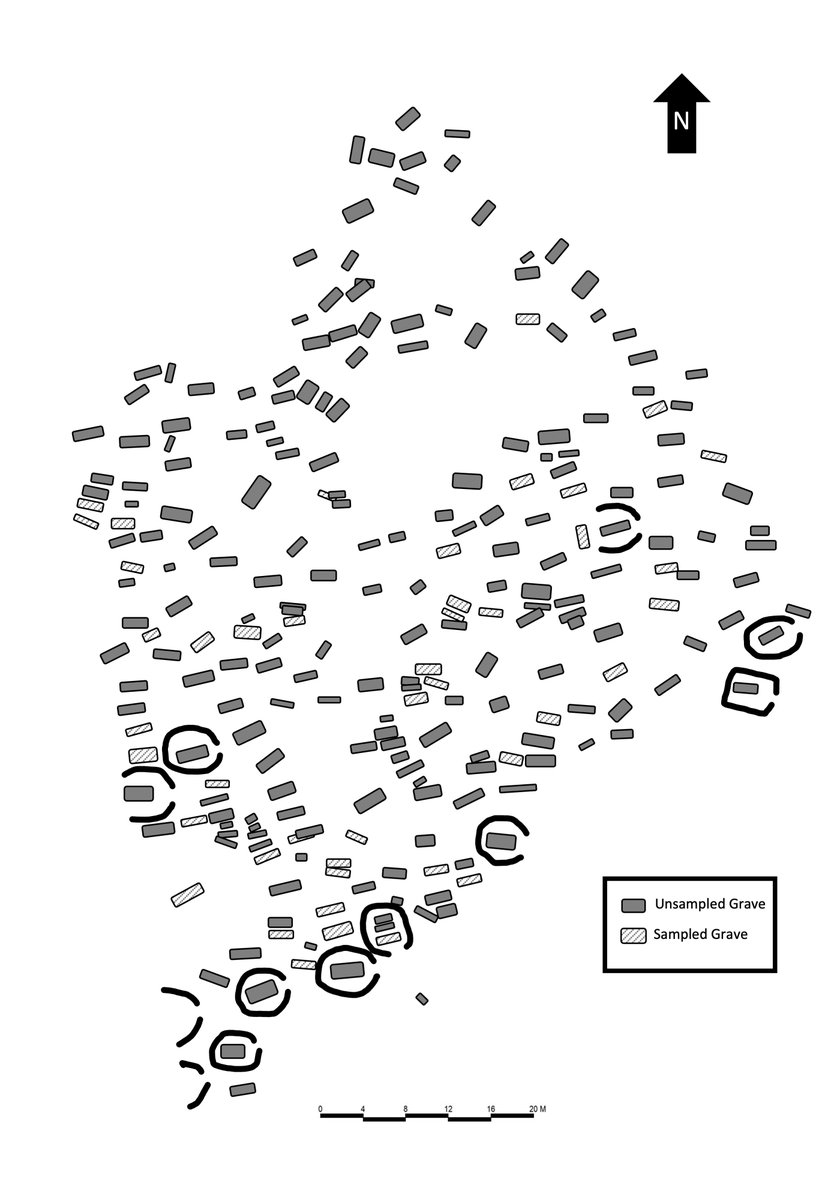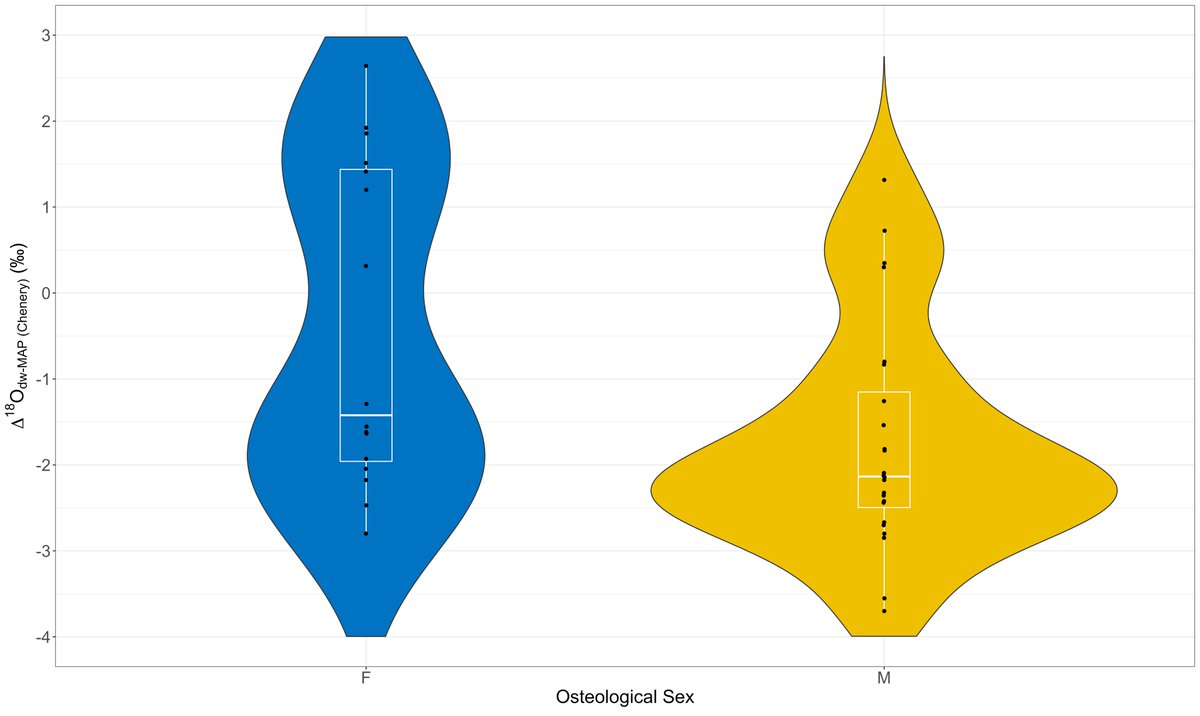
My new paper is out today on isotopic analyses at the amazing early medieval cemetery of Finglesham in Kent in Arch&Anth Sciences @SpringerAnthro
doi.org/10.1007/s12520…
Summary 👇
#earlymedieval #medievaltwitter #archsci #isotopes #Archaeology 1/9
doi.org/10.1007/s12520…
Summary 👇
#earlymedieval #medievaltwitter #archsci #isotopes #Archaeology 1/9

I analysed bones & teeth from 46 individuals @ Finglesham to look @ where they grew up, what they ate as kids & if that had changed in adulthood. I was interested in if social status or gender made any difference in whether someone was a migrant to Kent or what they ate. 2/9 

I found that childhood diet (tooth roots) vs adult diet (ribs = ~10yrs before death) were subtly different, with a wider range of resources being eaten in early life vs later in life when they were presumably living in & around Finglesham, this links with mobility & gender. 3/9 

Female & male adult diets (L) were virtually identical but this was different in childhood (R) suggesting men & women ate slightly different diets, with men having a broader isotopic niche - it could be partly physiological differences but there's more to it. 4/9 



These same women & men came from different places - with more men being immigrants to Finglesham from colder regions, there are women from colder places too but there were more "local" women in the sample, suggesting diff childhood diets might be linked to migration. 5/9 

Way too much time grappling w enamel C isotopes & tissue offsets made me think their diets changed over time & that they started to eat more freshwater fish due to Christian dietary laws which is supported by some work done at Lyminge in Kent & the laws of Wihtred. 6/9
There were some individuals who really stood out in every way, isotopic and otherwise e.g. grave 165 25-40yr old male with a seax, belt buckle and knife whose grave orientation was unusual but so was his diet. 7/9 

What Finglesham represents to me is a multi-origin community whose identity was formed in Kent, with no particular grave goods marking people out as incomers, and dietary signatures homogenising over time signalling shared foodways in their new community. 8/9
Thanks so much to @DrTrishBiers & The Duckworth Laboratory for giving me permission to work with this amazing cemetery and just being fantastic. Thanks also to @Cambridge_Trust & @CamPhilSoc for funding my PhD work. 9/9
BONUS tweet - all data are available as suppmat with #RStats code (annoyingly as a PDF) but I'll pop it on @github as well - cheers to the anon reviewer who actually ran the code to test it. Additional metadata can be found in my @ESAEcology paper - doi.org/10.1002/ecy.33…
• • •
Missing some Tweet in this thread? You can try to
force a refresh



